Innovation
Award
How DoR organized an all-team pop-up newsroom in Transylvania
published by Decât o Revistă, Romania
Between July 22 and 26 we moved our entire newsroom — thirty people — to Târgu Mure, a town in Transylvania about 350 kilometres away from our usual location in Bucharest, Romania. Our goal was to document and publish the most relevant stories for locals, as well as to organize meetings with our community in the area and make new connections.
Bottom line, we:
- Published 26 stories (with four translated into Hungarian, the language of the largest minority population in the area);
- Published 29 portraits of local people and five portraits of local dogs;
- Published a print magazine dedicated to Saschiz, a village in the region;
- Organized six events.
All of this happened in only four full days of work.
A pop-up newsroom like the one we organized in Târgu Mureș comes with a lot of uncertainty. What if we don’t have enough time to find the most relevant stories? What if we misrepresent them? What if we misunderstand something? And how can we move beyond what many call “parachute journalism” — being a media organization from the capital city publishing stories from an outsider perspective, barely scratching the surface or digging in the completely wrong place?
There’s been a lot of discussion — and backlash against — “parachute journalism” in recent years, particularly as urban news organizations venture outside major cities to understand the forces of populism. Our mission for the pop-up newsroom was different, but some of the concerns were the same. We also wanted to produce journalism that would be relevant to local audiences as well as to a wider readership in other parts of Romania.
We knew we needed close dialogue with the local community in order to validate or correct what our journalists discovered in the field. We arrived there with a list of possible topics and then gave up on half of them because the people who allowed us into their lives and spaces showed us more relevant subjects to document.
We discovered the city through its food and architecture, got to know stories from its minority ethnic communities and approached various subjects, from agriculture to education and local politics – we even covered a breaking news event.
Here’s how we pulled it off.
Before we got there
Media DoR is a non-profit, independent journalism platform that helps readers connect and understand one another and what they can do to tackle the problems of modern-day Romania. We publish a quarterly print magazine featuring longform narrative journalism as well as digital storytelling, and we organize events for our community, from live journalism shows at the National Theatre in Bucharest and The Power of Storytelling conference, to smaller meetups for our community members to discuss common topics of interest.
The project in Târgu Mureș was the first time we included the entire organization in an out-of-town reporting initiative, but we’ve taken such trips before, which helped us understand what goes into such a pop-up journalism experience and how to blend reporting with community engagement.
In April 2018, our journalists spent a few days in Alba Iulia, Transylvania, covering stories together with students interested in journalism, and in March 2019 the team covering rural development for DoR spent nearly a week in Bucovina in northern Romania, building connections and documenting stories about local businesses, tourism and farming in several villages.
These experiences are grounded in our belief that the most relevant stories for our readers are found when we can be deeply embedded in the communities we are documenting and when we have established a dialogue built on trust that helps challenge the assumptions we all bring to the table.
Our previous pop-up reporting trips taught us a lot about how we can do better journalism in the field, how we can work better under time pressures, and also how we can make the best logistical arrangements for the team. So when we started planning, we knew it needed to be a shared responsibility, from project management all the way to researching the first leads for stories.
We designated a core team of organizers who had an overview of different key aspects of the plan:
- The project budget;
- Logistics: getting to/from Târgu Mureș, accommodation, transport while in the town;
- The editorial workflows and roles during the pop-up;
- Community events;
- Events for our team;
- Partnerships and sponsorships for the project;
- Marketing and social media, before and during the project.
We started by outlining the goals of this pop-up newsroom, which would determine all our decisions regarding the program and the events we would put forward:
- Document stories that were relevant for the local community and reflected modern life in one of the oldest towns in Romania;
- Get to know our community of readers in Târgu Mureș and have their insights included in the reporting process;
- Create a team-building experience for DoR staff.
Building on these three pillars as well as our knowledge — and mistakes — from reporting trips, we made several decisions early on that defined the experience.
The editorial plan
For the first time, we used Hearken technology and guidance to gather questions from our community, both from Târgu Mureș and other parts of the country, that could shape our reporting in the city. It helped us make connections in town and following up on some of the questions received through Hearken helped inform us about residents’ views of local authorities and the local education system.
It was important for us to have everyone in the organization, including non-editorial staff, participate in the initial research and have as many people as possible looking for stories once we arrived, so we put together an assignment. We split everyone into groups, trying to mix up teams and get people together who might not work with each other every day, and asked them to come up with three story ideas, three community event ideas, and three ideas for staff activities while we were in town.
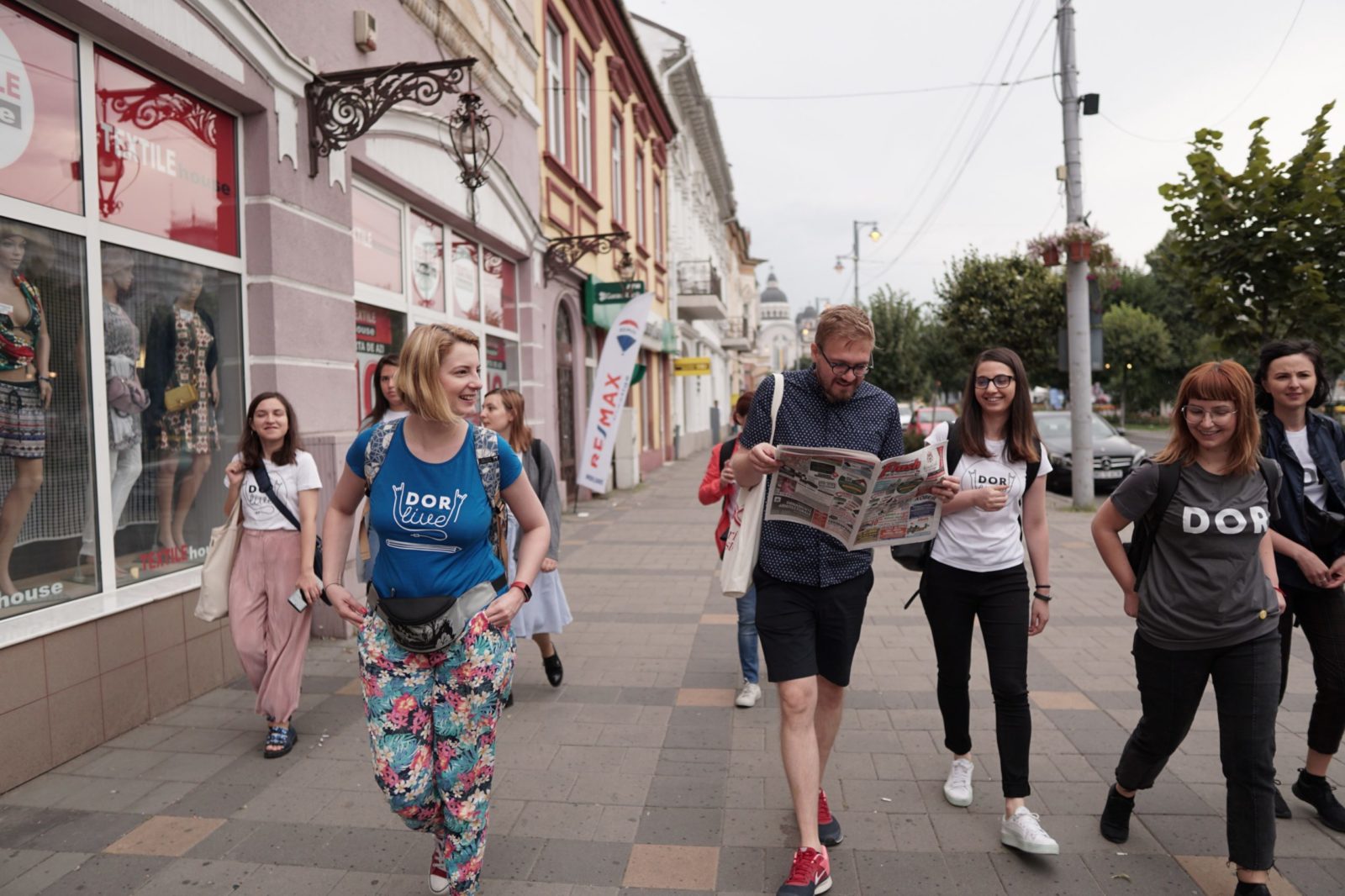
- Photo: DoR
We pulled some key leads from the lists and assigned further research and planning to teams based on the existing beats of DoR where appropriate – education and rural development. It was important to have some meetings planned in advance, especially for stories that required visits to villages and meetings with entrepreneurs, but we also benefited from the flexibility of journalists who arrived with open diaries and were ready to start from scratch.
We also made sure to allocate roles according to the needs that the newsroom would have during the week in Târgu Mureș, which meant several people were in new roles for the duration of the project, such as our front-end developer who became a photographer for the pop-up newsroom.
Logistics
Our pop-up newsroom was made possible thanks to our host Lateral, a technology company with offices in Târgu Mureș that lent us office space the week we spent in town. We used it not just for for writing time and staff meetings, but also as an event space to invite our community into our newsroom and for special events, which we did on several occasions.
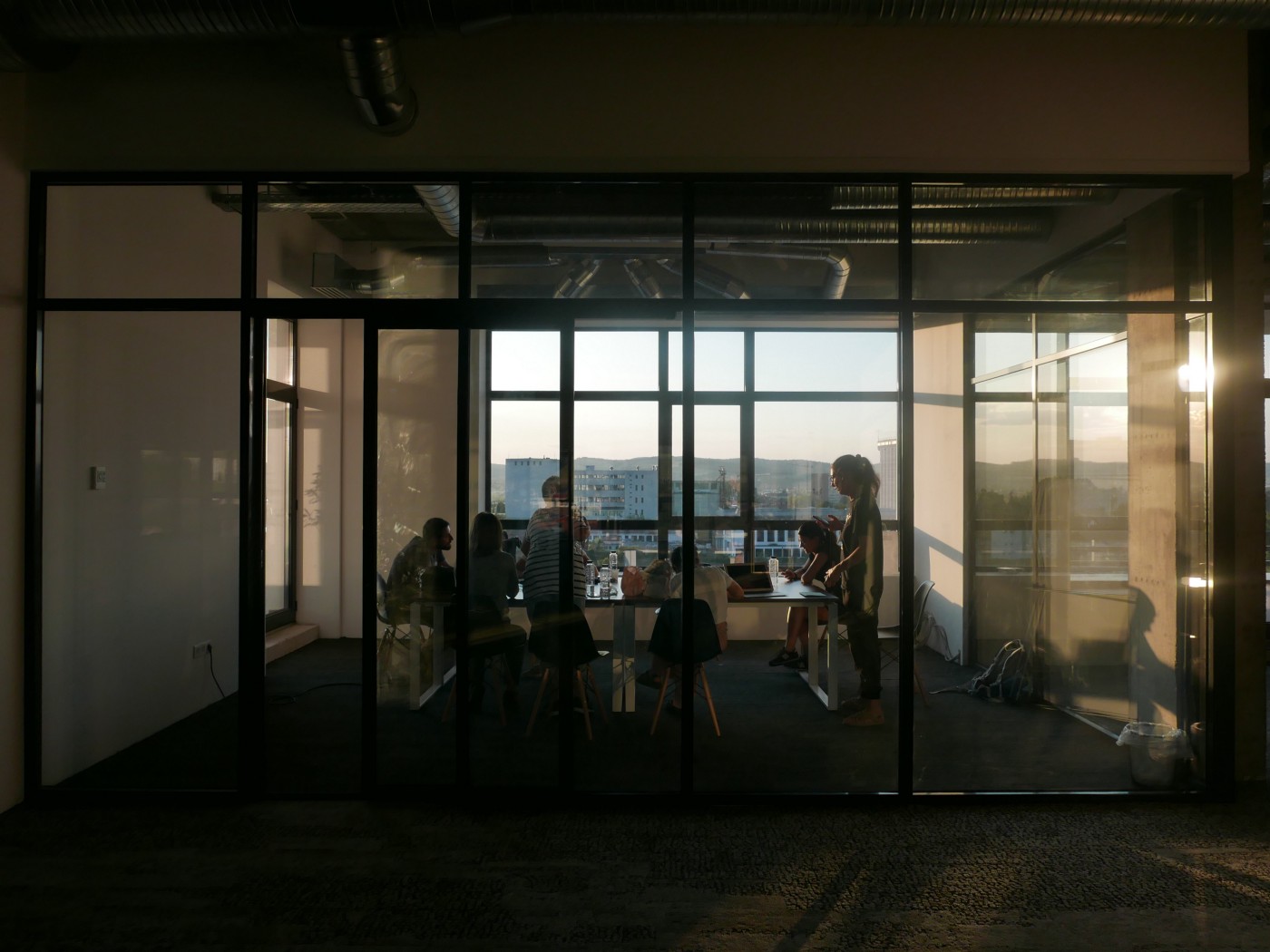
- Photo: DoR
Help from Lateral also came in the form of local insights and tips. We were joined by a Lateral employee at our editorial meeting at the end of the first day in town. They were one of the first to help ‘debug’ some of our thoughts about the stories we were planning on working on.
Additionally, we set up collaborations with Memento Bus, who allowed us access to a couple of their coaches to travel to and from Târgu Mureș, and with Continental Forum Hotels, who made our stay that much more peaceful.
We also planned a couple of experiences for staff as an opportunity to disconnect from the daily grind and enjoy the pop-up newsroom as not just a journalistic challenge, but a team experience.
Establishing such partnerships helped us stay within the budget for the trip and having a local host like Lateral was extremely valuable in granting us a space to call home for the newsroom.
Events
We planned several community events in advance, using Google Forms for RSVPs in order to know who we were expecting to come and to prepare for the right crowd size.
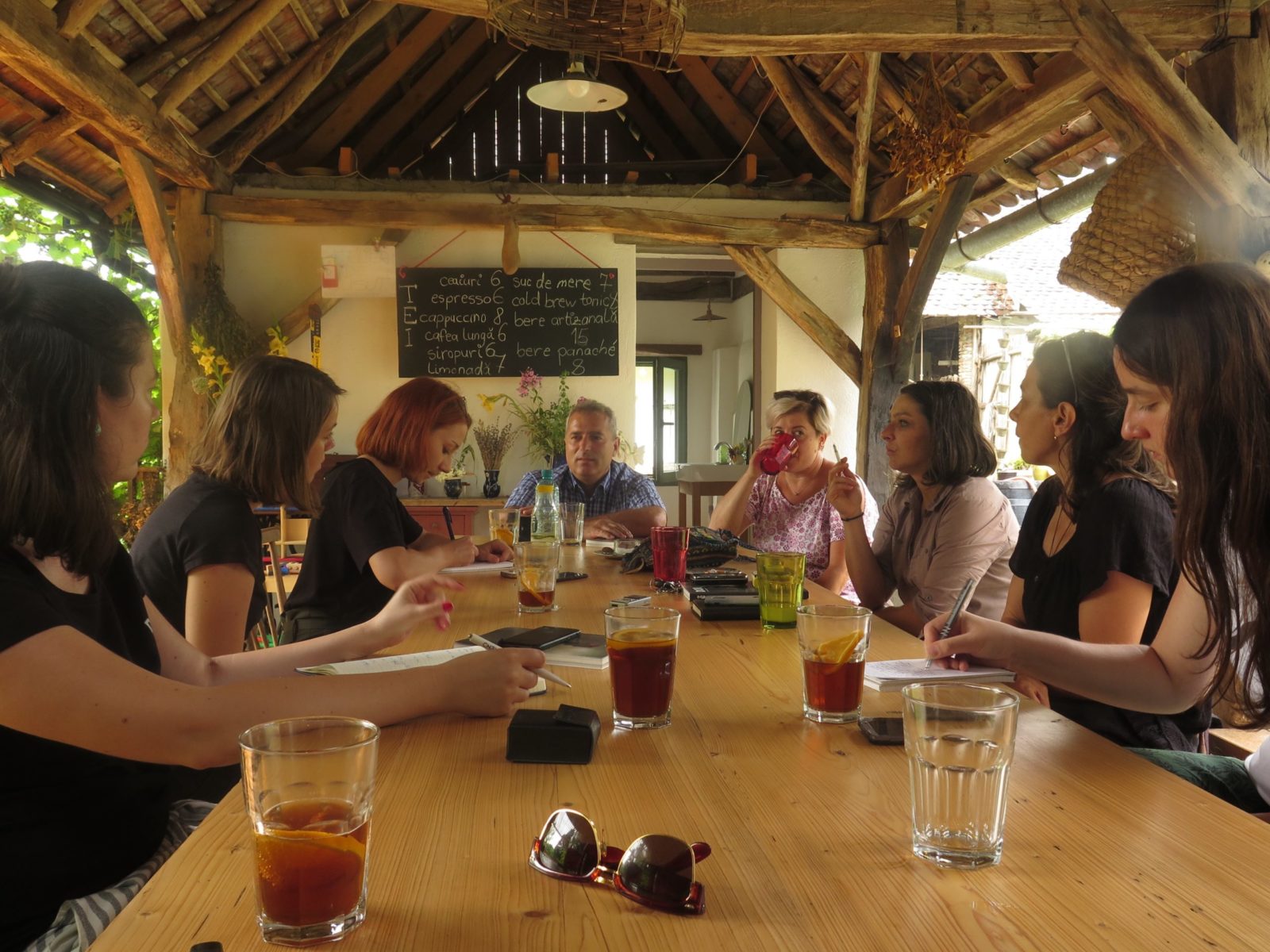
- Photo: DoR
On the first day, we organized a community talk in Saschiz, a village that experiments with various community engagement models to revive the place, where we brought together all the local actors and explored how their models can be replicated in other villages. We organized a meeting with our readers (in the months leading up the pop-up, around 2,700 readers accessed the DoR website) where we shared some information from behind the scenes about DoR and our journalism, and then split into groups to discuss what our readers thought we should be reporting on while we were in town. The next day we organized a visual storytelling workshop for teenagers, followed by a Q&A with photographer Alex Gâlmeanu on the final evening of our stay there.
From our experience in Bucovina, where we had hoped to organize community events but failed to because we didn’t begin planning them until we arrived, we knew having all the logistics in place well in advance helped make sure we could put together a quality experience and people could plan to attend it.
On the ground in Târgu Mureș
On the first full day in Târgu Mureș, those who weren’t already in nearby villages for interviews went on guided tours of the town. We booked three different tours — one with a Romanian, one with a Hungarian and one with a guide from the local council — to hear the town’s story from different perspectives, getting to know the history and current challenges of Târgu Mureș as well as getting our bearings. We were, after all, new to the city and didn’t know much about its neighborhoods, architecture or local transport.
The stories we heard on these tours turned into an article presenting the town from three different perspectives, and our guides’ experiences helped us understand more about the relationship between town residents and the local authorities, which later became a topic for one of our stories published during the pop-up.
We developed several content formats that would help get everyone involved in writing:
- The ‘Dog of the Day,’ starting with a Facebook-famous pug;
- Portraits of people we met in our reporting, published on Instagram and Facebook;
- ’24 hours in Târgu Mureș,’ where reporters each covered an hour on the clock in different parts of town;
- A New York Times-style ’36 hours in Târgu Mureș.’
The designated editors for the pop-up newsroom spent most of the time at our office at Lateral, while everyone else was encouraged to spend as much time as possible in the field and to attend our community events.
To get around town during our stay, we used rental cars from Autonom, as well as our staff’s personal cars, taxis, and bikes where possible. The local taxi drivers proved a valuable source of information about the town.
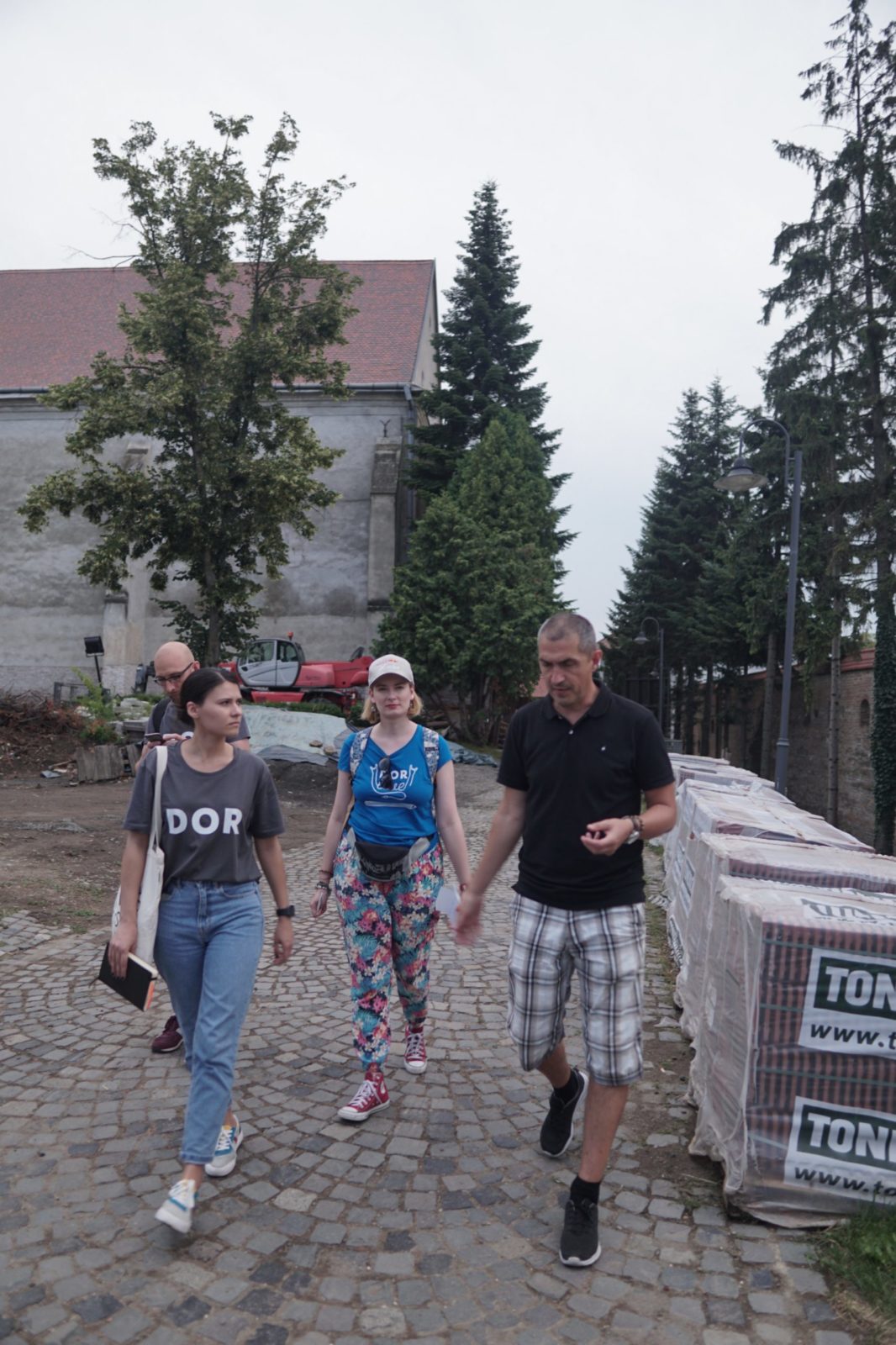
- Photo: DoR
While the workload and the adrenaline of being in a new space and new reporting scenario kept everyone busy and sometimes working late into the night, the scheduled breaks and planned activities for the team were very welcome. An evening spent at a winery in a nearby village and one spent at an award-winning restaurant helped everyone pause and enjoy each other’s company away from the pressure of deadlines and experience the city as more than an editorial project.
Thanks to not planning in advance too much, we were able to jump on a breaking news story about a social housing centre closed for renovations, its residents being evacuated, and many having nowhere else to go. This drove home the idea that you need to have a flexible mindset when going into a pop-up newsroom: do your homework about a place, but don’t plan every hour of the working day and be open to your plan being challenged by what the town throws at you at the last minute.
To make sure knowledge circulated across teams, we had regular meetings every day with updates on each project, as well as more informal conversations — contacts and ideas exchanged over dinner, and general chat in the newsroom meant everyone could feel they were working towards a common goal.
To make sure our journalism was accessible and had an impact in the local community, we first printed a magazine for the La noi project, our rural development beat, which covered several stories from the same village near Târgu Mureș. The magazine collated all of the stories about the community in the village we documented and produced during the pop-up newsroom. It was printed during our stay and delivered to the village on our final day in the county. We also translated several of our stories into Hungarian, as the largest minority in Târgu Mureș is Hungarian.
Gains
On the last morning of the trip, we gathered the entire team in the meeting room of Lateral, our hosts in Târgu Mureș, and asked them what they gained from the experience. Here are some of the things they said:
Reporter: I was reminded of how efficient we become when catapulted into a strange space, and how open locals are when you admit that you know nothing and you want to learn from them.
Community manager: I am glad our readers who participated in the community events wouldn’t go home at the end of the night. In smaller towns, our readers’ desire to know us and spend time with us is much bigger than in the capital city. For us, as a team, we had the opportunity to see how the others’ work looks like, what is difficult for them, why it is difficult to be a reporter and I think this will help us work better together when we return home.
Fundraiser: It was useful to understand how my colleagues work in the field, and this will help me explain our work and mission better to commercial partners. And I’m happy those envelopes are so heavy with messages they’re almost falling off the wall. (One day, a whole wall was filled with envelopes with the team members’ names on them and everyone was invited to thank their colleagues or leave them little notes in the respective envelopes, to take away at the end of the trip.)
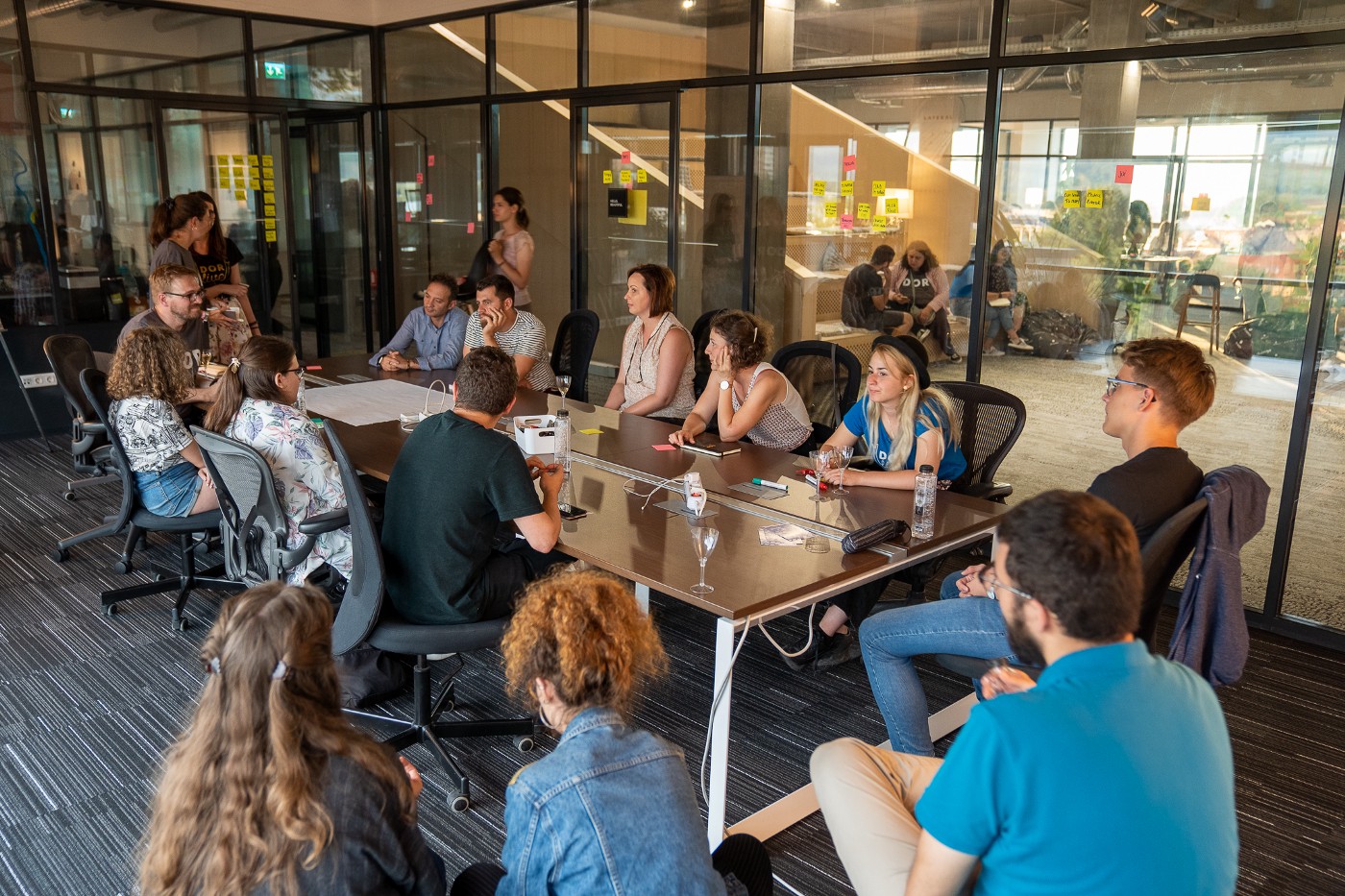
- Photo: DoR
Front-end developer: I had the opportunity to do the job I would’ve done if I wasn’t a developer: photographer. Also, I feel like we shook this place a bit, we left our mark and I’m sorry we’re leaving. I would’ve stayed one more week.
Reporter: Before coming here, I was stressing out about what I would write, but then I remembered an experience like this is about being present and about admitting you know nothing.
Creative director: Two things for me: one, I managed to assign art to local artists and photographers, over the phone, and I received excellent work on very short notice; and two, I managed to make all of you take photos, so from now on we’ll keep doing that. There’s a camera at the office and you all know how to use it.
What’s next?
This experience has been proof for us that journalism produced in close collaboration with the audience can be valuable and more relevant to the community than some ideas cooked up behind screens. We will continue to find ways to include readers in the editorial process where they want to contribute, and we’re working on communicating exactly what engaged journalism means to our community.
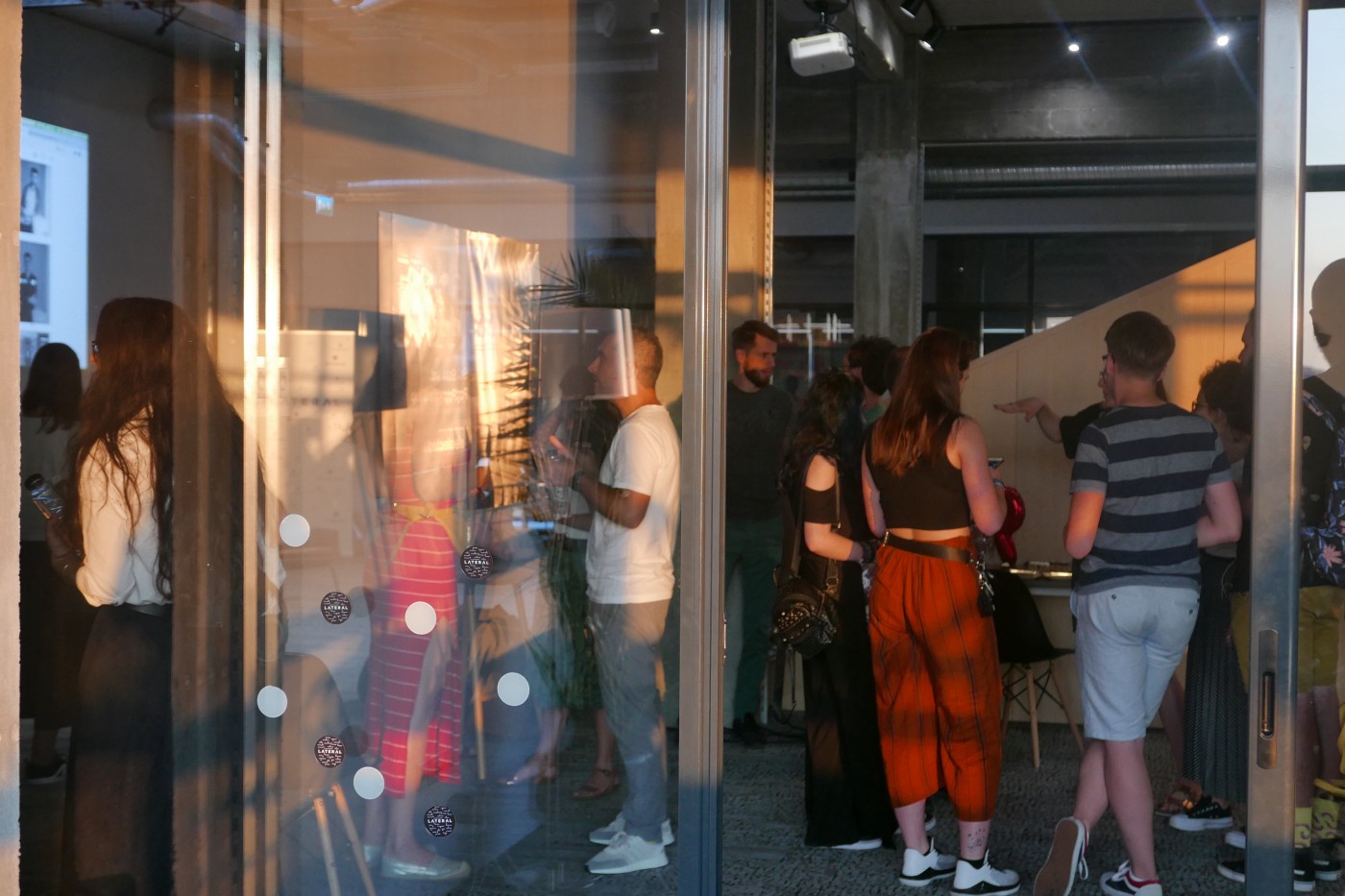
- Photo: DoR
The way we worked in Târgu Mureș inspired us to take more questions from our audience at an early stage in the reporting process and helped us identify ways in which to do so that work better for us. We invited the public again into another out-of-town reporting initiative, and while it’s not a pop-up newsroom, it’s an opportunity to work together with the public to learn the local angles and add value and depth to a city’s narrative in the national press.
We would also like to return to Târgu Mureș to continue the conversation we started, and are working on ways to do so over the next twelve months — a new election cycle awaits the country, and with it come new reporting challenges.
Toolkit and lessons learned
The following week, we discussed what advice we would give to other newsrooms who want to try this and what could be done better next time. Here’s what the team recommends:
Technical musts:
- A WhatsApp group for team-wide announcements;
- Google Drive and/or Dropbox for collaborative work;
- Accounts with the most popular social network in the area, in our case Facebook, for quick contacts and planning with residents;
- As many cameras as possible;
- External batteries;
- Cars/bikes for mobility.
Do:
- Plan some editorial things ahead, but be ready to change everything;
- Tour the place with local guides both to get the physicality of the area and to hear what narratives the locals have about their city;
- Be mindful of the narratives you bring as an outsider and validate them with locals;
- Involve locals in creating content;
- Have a safe space as a newsroom;
- Open your newsroom doors as often as possible;
- Ask for things: advice, feedback, contacts;
- Offer a learning experience (give a lecture or run a workshop, if any takers) or learn something from the locals (a local craft, how to make a dish);
- Have several editors;
- Pull a “Humans of ….” It’s a basic journalistic exercise and it can get everyone on the team involved in reporting, photographing and writing short profiles;
- Pull a “Pets of…”. Not only humans live here;
- Daily updates on everyone’s progress;
- Clarify tasks in advance so everyone knows their role for the next day;
- Have enough brains working on the operational side and logistics to enable the reporting to go smoothly;
- Leave enough time for getting lost around town and exploring;
- Translate work if applicable;
- Take breaks — for a couple of hours, do something other than journalism (wine tasting works wonders);
- Clear your newsroom’s schedule of anything else. Be there and just there;
- Find delicious local fast food;
Talk about it:
- Have a hashtag for the event and plan a social media presence;
- Partner with local media to ensure republication of stories in the local newspapers/websites;
- Leave a physical proof of your stay: a zine, postcards, etc.;
- Have a team debriefing at the end to assess the impact.
Do better than what we did:
- Get lost more;
- If you plan any products that require planning (such as the “24 hours in…” story), plan ahead, so it’s on everyone’s mind;
- Don’t plan things for after the community meetings (let people stay as long as they want);
- Have more cameras at hand;
- Sleep more.
We couldn’t make up our minds about:
- Wearing branded t-shirts. We did. We kind of looked like a cult. But we were also easily recognizable and people approached us thanks to them. Up to you.
This pop-up newsroom was made possible by funding and guidance from The Membership Puzzle Project.
Text by Cătălina Albeanu and Georgiana Ilie. Photos by Cătălin Georgescu, Mihai Ciobanu, Oana Barbonie and Andrei Grosu.
This is a list of stories DoR published during their pop-up newsroom in Transylvania in July 2019. Links lead to the articles in Romanian. Articles with a * before the title were also translated in Hungarian, the largest minority in the area.
Târgu Mureș, the town
* Three tours of Târgu Mureș. In our first day in Târgu Mureș, we explored the town with the help of three local guides and told three different stories about the place through their eyes.
* A different mayor for Târgu Mureș. After 19 years with mayor Dorin Florea, the city seems to lag behind other county capitals in the area, both in terms of infrastructure and urban development. What kind of mayoral candidate could help the city rise above interethnic tensions?
Are you also in med school? What brought med students to university in Târgu Mureș and what’s keeping them here?
* Târgu Mureș from the archives. A look at the town and its people during the previous century, in 27 photos from a local archive.
People of Mureș. A few of the people we’ve met in the five days we spent in the area.
Nobody listens to us here. A look at the Valea Rece neighbourhood in Târgu Mureș, from the outside and from behind the banners commissioned by the Town Hall that mark this poorer area from the rest of the city.
When buildings are fixed, people end up in the streets. The story of an evacuation that will leave dozens of vulnerable people without the safety of the social centre in which they live in Târgu Mureș.
Something’s happening in Târgu Mureș, but it’s not enough. A look at the town through the eyes of a student architect.
Târgu Mureș in 24 hours. Scenes from a day in the city, from dawn to midnight.
Târgu Mureș on stage. Exploring the theatre world of a town divided between two ethnic communities.
A hotel a few years ahead of its town. Privo pushes for a new standard of hospitality and gastronomy in Târgu Mureș.
36 hours in Târgu Mureș. How to spend a weekend in the heart of the country.
Where to eat. Seven restaurants recommended by locals.
Rural Mureș
Saschiz: 48 hours in a village that knows which way to grow.
The rhubarb trend. How this humble plant became a star in Transylvania.
The Transylvanian village with cheese to rival the Alps. In a village with barely 200 residents, an entrepreneur produces Swiss cheese from Romanian cows.
School and education
The unofficial map of Târgu Mureș. 16 teenagers portray the town with a mix of photos, drawings and interviews with locals scribbled on post-its.
Where do we go from here? We asked young people from Târgu Mureș how they see the town’s future and how it intersects with their plans.
Responsible choices. How the League of Students in Târgu Mureș prepares the 8 days when 130 school students try out university life.
Lessons Bogdan Rațiu learned after 10 years of teaching.
When the church becomes a school. In Vaideiu, the adventist church serves as a kindergarten, a school and a canteen.
The story we want to tell. The Jewish community in Târgu Mureș tells the story of its past in a museum that fills in blanks and brings the history taught in schools to life.
My worlds in Târgu Mureș. A teenager turned her friends into the main characters of her photos, learning how to become a good listener in the process.
School, an invisible benefit. In Band, a village in Mureș county experiencing poverty, illiteracy and seasonal migration, a mix of social and educational solutions tackles school abandonment.




